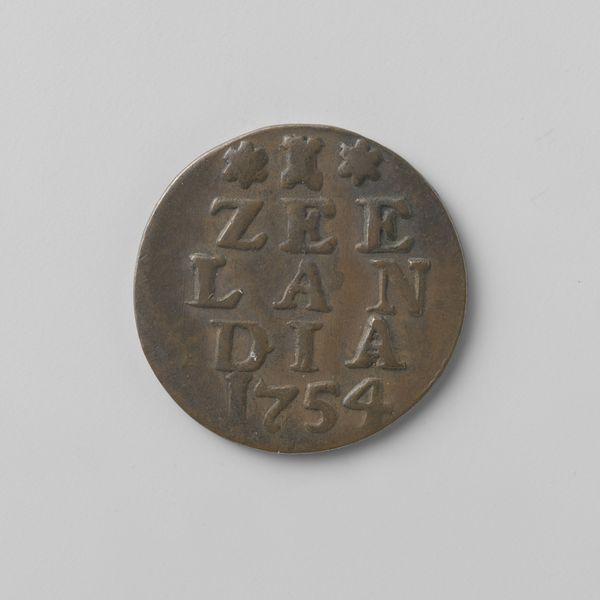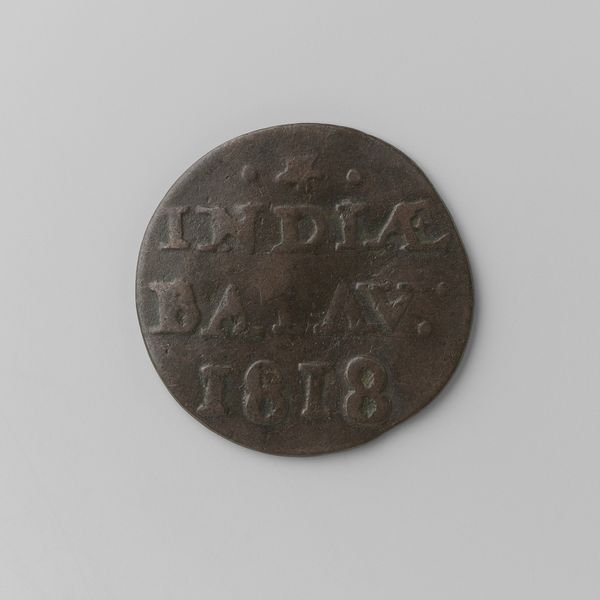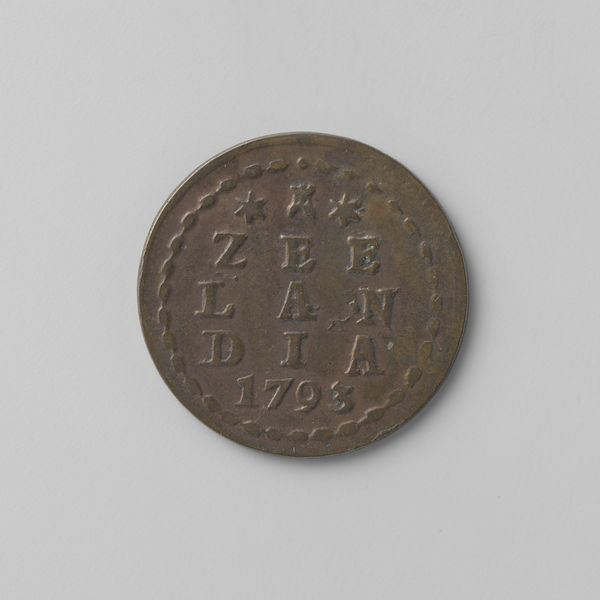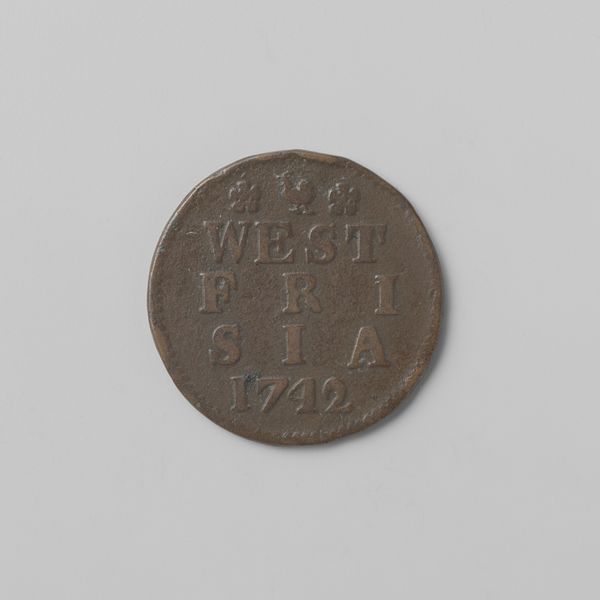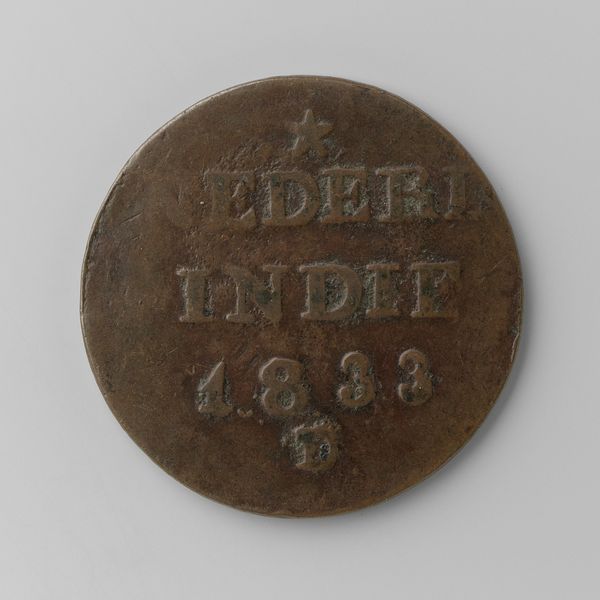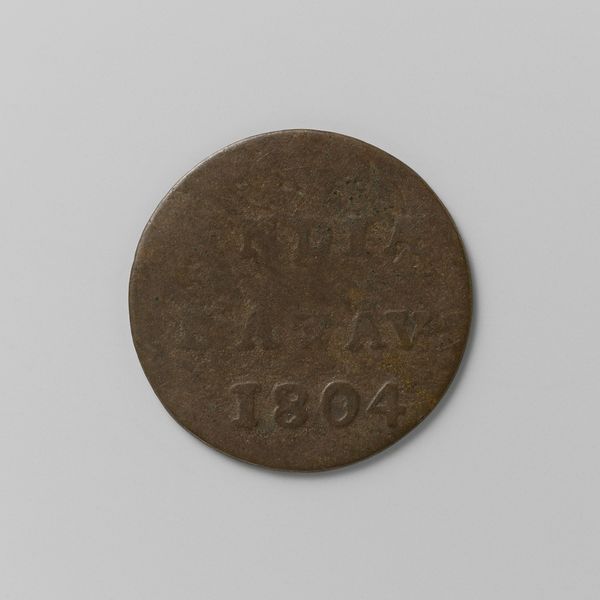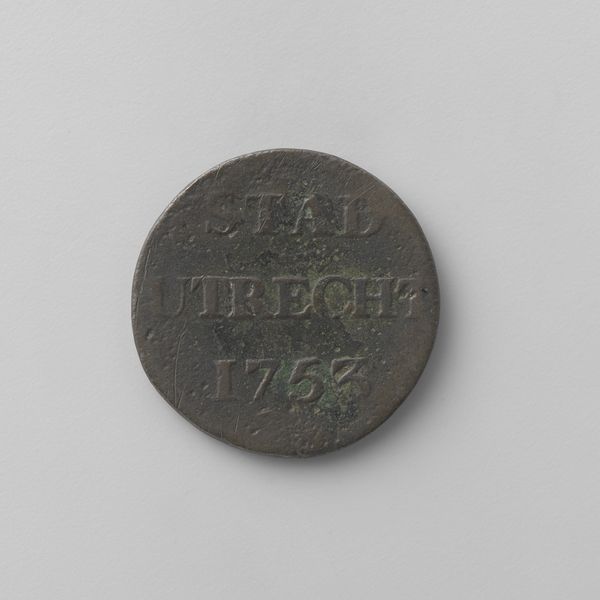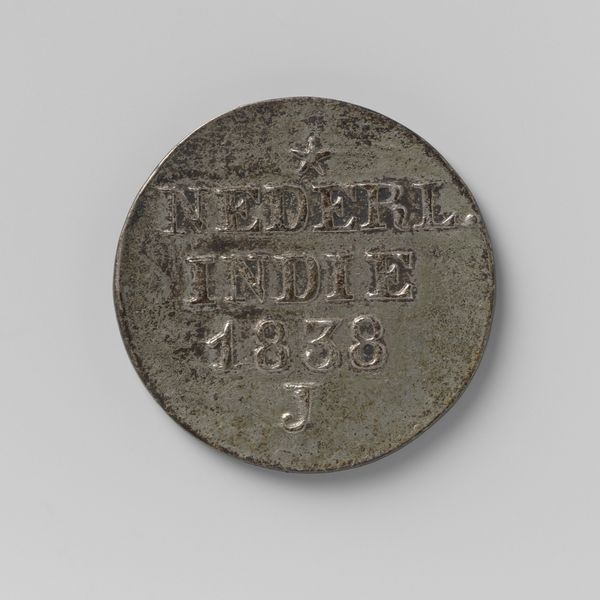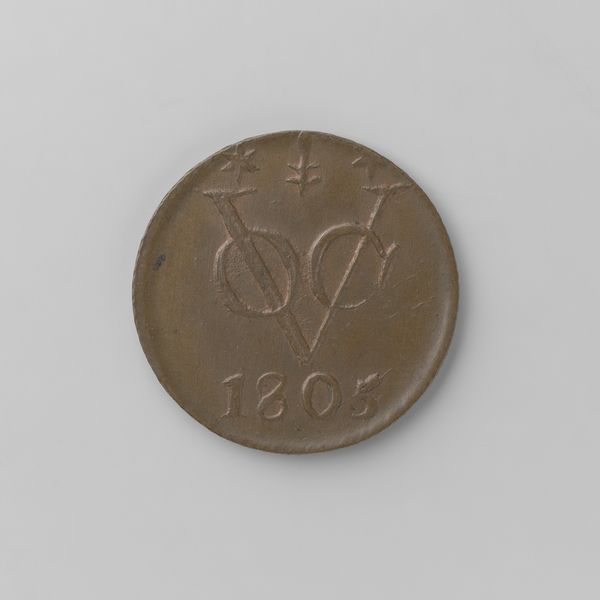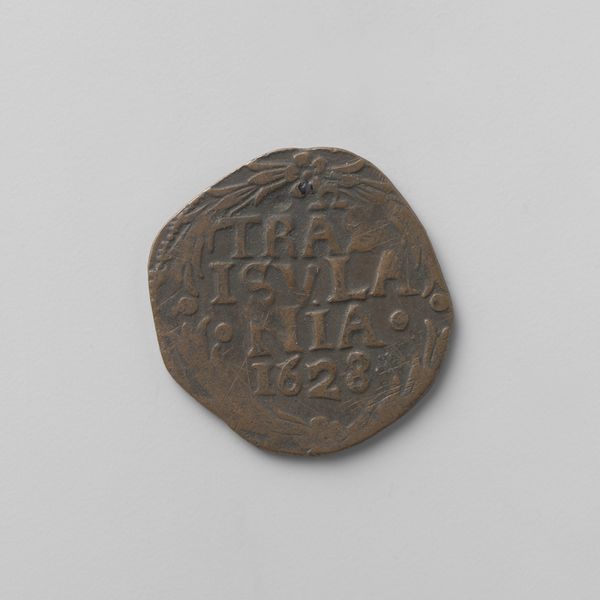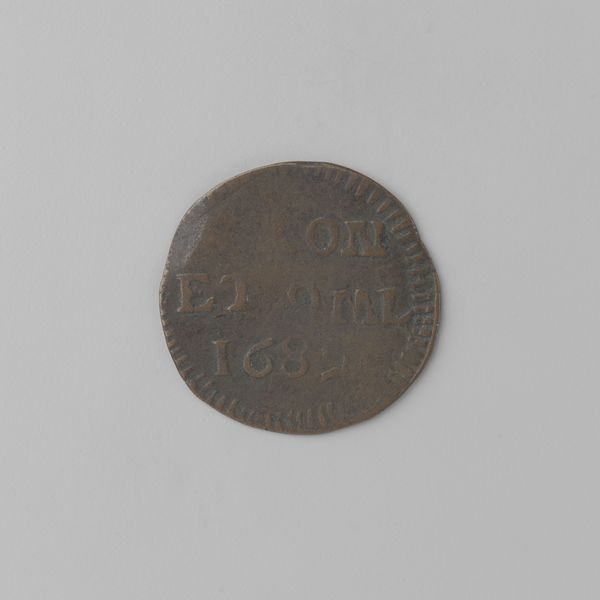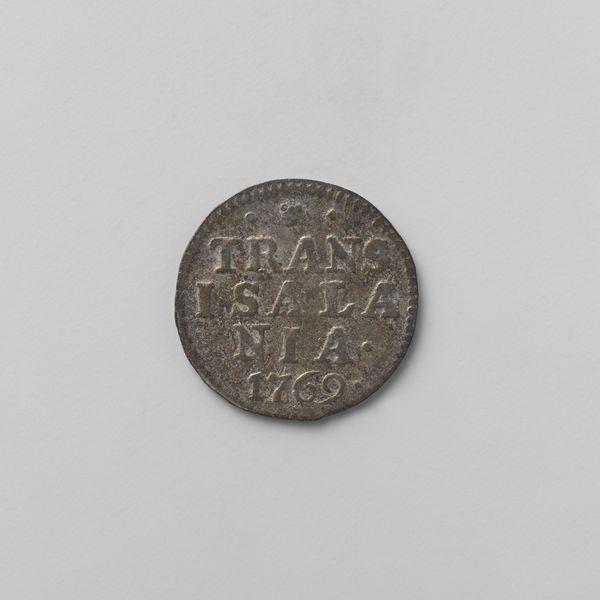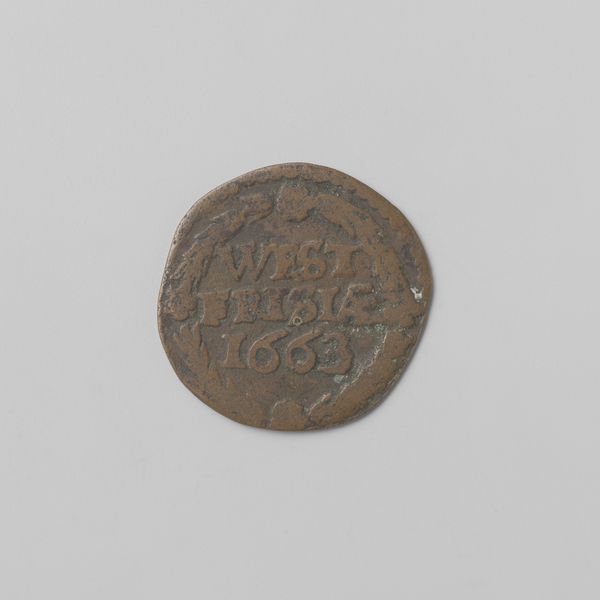
bronze, engraving
#
dutch-golden-age
#
asian-art
#
bronze
#
geometric
#
history-painting
#
engraving
Dimensions: diameter 2.2 cm, weight 2.70 gr
Copyright: Rijks Museum: Open Domain
This copper duit was struck in 1803 by the Batavian Republic to finance the Dutch East Indies. Look closely at the emblem atop the coin. This is no mere decoration; it's a stylized representation of the Lion of the Netherlands, a symbol stretching back to medieval heraldry. Consider how the lion—a beast of power—became a symbol of a nation's identity and ambition. We see echoes of it in ancient Mesopotamian art, where lions guarded temples, and later, in the heraldry of European royalty. Here, the lion embodies the Batavian Republic's colonial aspirations, its reach extending far beyond its borders. The image evokes a sense of dominance and control. But like all symbols, its meaning is fluid, capable of stirring conflicting emotions and interpretations as it evolves across time. This lion, once a proud emblem of power, serves now as a reminder of a complex, often troubled history, its roar echoing through the corridors of memory.
Comments
No comments
Be the first to comment and join the conversation on the ultimate creative platform.
